South Korea hires SpaceX to launch five spy satellites by 2025
Monday, 11 April 2022 12:55
South Korea has signed a contract with SpaceX to launch five spy satellites by 2025, with the first launch on a Falcon 9 rocket by the end of 2023.
The post South Korea hires SpaceX to launch five spy satellites by 2025 appeared first on SpaceNews.
NASA scientific balloon will take student payloads to stratosphere
Monday, 11 April 2022 12:54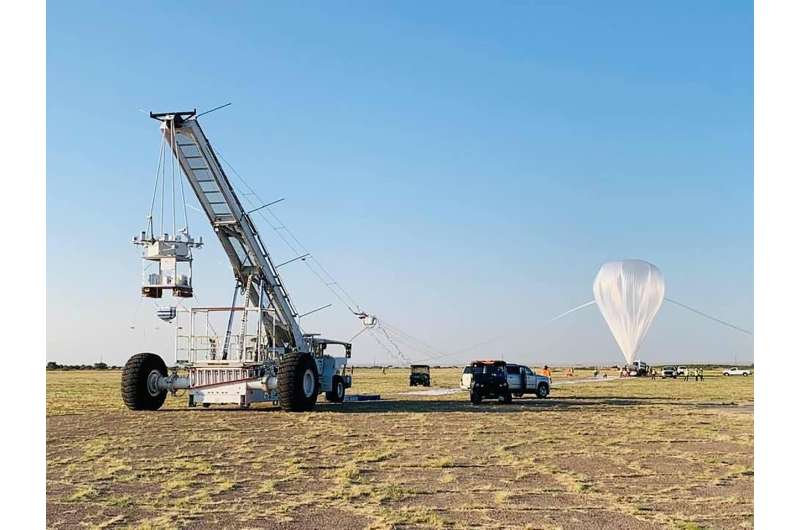
NASA has selected nine student teams to launch scientific payloads on a NASA heavy-lift balloon for the 16th High-Altitude Student Platform (HASP) mission flying during the fall 2022 campaign in Fort Sumner, New Mexico.
HASP, which is led by the Louisiana State University's Department for Physics, is a joint project between NASA's Wallops Flight Facility Balloon Program Office in Virginia, NASA's Science Mission Directorate, the Louisiana Space Grant Consortium in Baton Rouge, and NASA's Columbia Scientific Balloon Facility in Palestine, Texas.
"HASP provides higher education students with an authentic NASA experience to build a science payload, launch it, and analyze the data," said Joyce L. Winterton, Wallops senior advisor for education and leadership development. "It encourages students to pursue STEM careers and become part of the future NASA workforce.
SatixFy architect Yoel Gat dies amid SPAC merger plans
Monday, 11 April 2022 12:50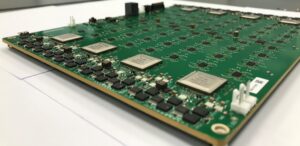
Satellite communications equipment maker SatixFy said April 10 that cofounder and outgoing CEO Yoel Gat has died, days after announcing a leadership transition that would seat a new CEO in June amid plans to become a public company.
ULA orders 116 Aerojet Rocketdyne engines for Vulcan’s upper stage
Monday, 11 April 2022 12:31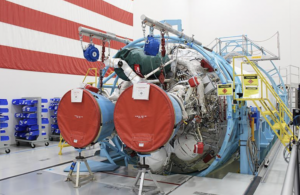
Aerojet Rocketdyne announced April 11 it has received an order from United Launch Alliance for 116 engines for the upper stage of ULA’s Vulcan Centaur rocket.
The post ULA orders 116 Aerojet Rocketdyne engines for Vulcan’s upper stage appeared first on SpaceNews.
Companies build up teams to compete for Artemis lunar rover
Monday, 11 April 2022 09:27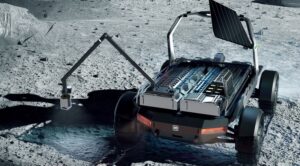
Companies are adding to or creating new teams in anticipation of a NASA competition for a lunar rover to support later Artemis missions to the moon.
The post Companies build up teams to compete for Artemis lunar rover appeared first on SpaceNews.
Dwindling water levels of Lake Powell seen from space
Monday, 11 April 2022 06:10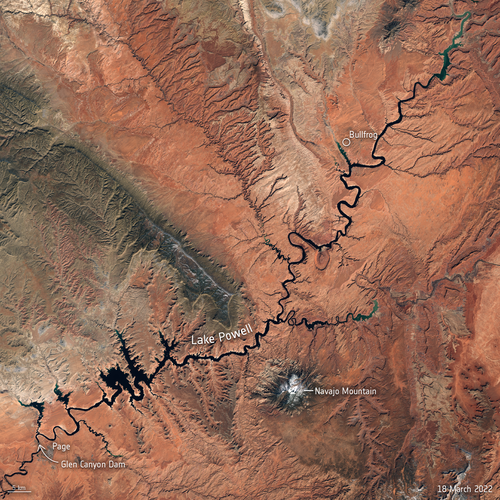
After decades of drought, water levels in Lake Powell, the second-largest humanmade reservoir in the United States, have shrunk to its lowest level since it was created more than 50 years ago, threatening millions of people who rely on its water supply. Satellite images allow us to take a closer look at the dwindling water levels of the lake amidst the climate crisis.
Webb’s instruments: meet MIRI
Monday, 11 April 2022 06:00 Video:
00:01:00
Video:
00:01:00
The James Webb Space Telescope will explore the infrared Universe.
It will use four cutting-edge instruments, including the Mid-InfraRed Instrument. MIRI is one of Europe's contributions to the James Webb Space Telescope.
MIRI supports all of Webb’s science goals. It will image the Universe, study planets around our own and other stars and investigate stars and galaxies across cosmic history.
The instsrument will be kept extra cold by its very own ‘cryocooler’. This stops heat from Webb disrupting MIRI’s detectors, so the sensitive instrument can see mid-infrared light.
Webb is an international partnership between NASA, ESA and CSA
Learn more
House committee leaders ask White House to withdraw proposed NTSB regulations on commercial launch investigations
Sunday, 10 April 2022 19:12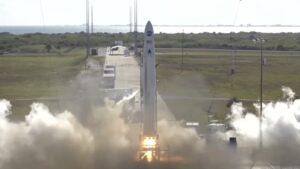
The leaders of the House Science Committee have asked the Biden administration to withdraw a controversial proposed rule regarding commercial spaceflight investigations, calling it “plainly unlawful.”
The post House committee leaders ask White House to withdraw proposed NTSB regulations on commercial launch investigations appeared first on SpaceNews.
Kendall highlights space's importance, need to 'transform' operations and thinking for the domain
Sunday, 10 April 2022 10:39 Presenting a robust case for operating in - and defending - space, Air Force Secretary Frank Kendall said April 5 that "transforming" without delay priorities, practices and spending for the domain is necessary to adequately adapt to a theater that is more volatile yet also increasingly essential to the nation's security and everyday life.
"Space is a warfighting domain now," Kendall blunt
Presenting a robust case for operating in - and defending - space, Air Force Secretary Frank Kendall said April 5 that "transforming" without delay priorities, practices and spending for the domain is necessary to adequately adapt to a theater that is more volatile yet also increasingly essential to the nation's security and everyday life.
"Space is a warfighting domain now," Kendall blunt Raymond praises Space Force achievements and purpose while noting ongoing threats, challenges
Sunday, 10 April 2022 10:39 Using language that was both stark and an urgent call to action, Chief of Space Operations, Gen. John W. "Jay" Raymond, said April 5 that the cornerstone to U.S. security and prosperity is keeping space "accessible, stable, and secure."
And while achieving that goal was once a foregone conclusion, it no longer is. That is why the U.S., its allies and most of all, the United States Space Fo
Using language that was both stark and an urgent call to action, Chief of Space Operations, Gen. John W. "Jay" Raymond, said April 5 that the cornerstone to U.S. security and prosperity is keeping space "accessible, stable, and secure."
And while achieving that goal was once a foregone conclusion, it no longer is. That is why the U.S., its allies and most of all, the United States Space Fo Astronomers detect galactic space laser
Sunday, 10 April 2022 10:39 A powerful radio-wave laser, called a 'megamaser', has been observed by the MeerKAT telescope in South Africa.
The record-breaking find is the most distant megamaser of its kind ever detected, at about five billion light years from Earth.
The light from the megamaser has travelled 58 thousand billion billion (58 followed by 21 zeros) kilometres to Earth.
The discovery was made
A powerful radio-wave laser, called a 'megamaser', has been observed by the MeerKAT telescope in South Africa.
The record-breaking find is the most distant megamaser of its kind ever detected, at about five billion light years from Earth.
The light from the megamaser has travelled 58 thousand billion billion (58 followed by 21 zeros) kilometres to Earth.
The discovery was made CACI completes review for planned 2023 satellite launch
Sunday, 10 April 2022 10:39 CACI International Inc (NYSE: CACI) has completed the Critical Design Review (CDR) for its demonstration small satellite program (DemoSat) launch scheduled for early 2023, which is slated to deliver two mission payloads to low earth orbit. CACI and its partner, York Space Systems - a specialized manufacturer of spacecraft and space collection solutions - will demonstrate alternative positioning,
CACI International Inc (NYSE: CACI) has completed the Critical Design Review (CDR) for its demonstration small satellite program (DemoSat) launch scheduled for early 2023, which is slated to deliver two mission payloads to low earth orbit. CACI and its partner, York Space Systems - a specialized manufacturer of spacecraft and space collection solutions - will demonstrate alternative positioning, The hunt for the gravitational wave background
Sunday, 10 April 2022 10:39 Coalescing supermassive black holes in the centers of merging galaxies fill the universe with low-frequency gravitational waves. Astronomers have been searching for these waves by using large radio telescopes to look for the subtle effect these spacetime ripples have on radio waves emitted by pulsars within our Galaxy.
Now, an international team of scientists has shown that the high-energy
Coalescing supermassive black holes in the centers of merging galaxies fill the universe with low-frequency gravitational waves. Astronomers have been searching for these waves by using large radio telescopes to look for the subtle effect these spacetime ripples have on radio waves emitted by pulsars within our Galaxy.
Now, an international team of scientists has shown that the high-energy Space Development Agency to accelerate deployment of missile-tracking satellites
Sunday, 10 April 2022 10:06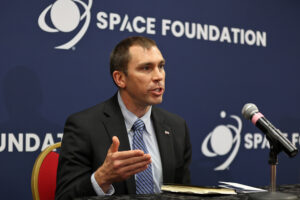
The U.S. Space Force is requesting an additional $200 million in fiscal year 2023 to launch satellites for the Space Development Agency’s missile-tracking constellation.
The post Space Development Agency to accelerate deployment of missile-tracking satellites appeared first on SpaceNews.
First all-private mission docks with ISS
Sunday, 10 April 2022 02:26 The crew from the first all-private mission to the International Space Station docked with the orbital outpost Saturday morning, a historic moment marked by a ceremonial welcome from astronauts on board.
SpaceX's Crew Dragon Endeavor docked at the ISS at 8:29 a.m. EDT and astronauts entered the orbital outpost at 10:13 a.m.
The docking process was held up for about 45 minutes aft
The crew from the first all-private mission to the International Space Station docked with the orbital outpost Saturday morning, a historic moment marked by a ceremonial welcome from astronauts on board.
SpaceX's Crew Dragon Endeavor docked at the ISS at 8:29 a.m. EDT and astronauts entered the orbital outpost at 10:13 a.m.
The docking process was held up for about 45 minutes aft 
